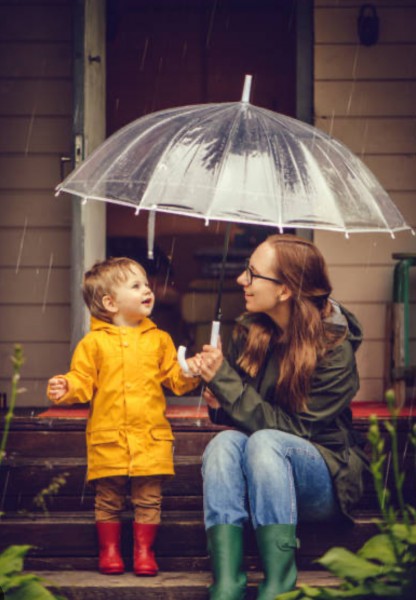
How to Keep Children Safe and Calm During a Hurricane: Preparation and Support
- Child learning center
- 09 Oct 2024
- 574
How to Keep Children Safe and Calm During a Hurricane: Preparation and Support
Hurricanes can be a frightening and unpredictable experience, especially for young children. As a caregiver or parent, your role is not only to ensure their physical safety but also to help them remain calm and emotionally secure. Preparation is key to managing both aspects effectively. Here are some practical tips for keeping children safe and calm during a hurricane and how to prepare them in advance.
1. Preparation Before the Storm
Preparation is critical to help children feel more secure during a hurricane. Here’s how you can get ready with them:
a. Involve Children in the Process
Children feel safer when they understand what’s happening and are included in preparations. Explain the basics of a hurricane in an age-appropriate way. Let them help pack emergency kits or choose comfort items like stuffed animals and blankets to bring with them.
b. Create an Emergency Kit Together
Build an emergency kit that includes essentials for both you and your child:
• Non-perishable food and bottled water (at least a 3-day supply)
• Medications
• Flashlights, batteries, and a first-aid kit
• Comfort items such as favorite toys, books, or games
• A whistle or device to signal for help
• Diapers, formula, wipes, and baby supplies, if needed
Allowing children to help pack their bag gives them a sense of control and involvement.
c. Prepare Your Home
Before the storm, secure outdoor objects, close windows, and have a safe room ready. Let your children know that this is part of keeping the family safe. If possible, make the safe space comfortable with pillows, blankets, and their favorite items.
d. Practice Drills
Perform a hurricane drill with your children so they know what to expect. Show them the safest place in the house to go during the storm and practice moving there. Reassure them that staying calm and following the plan is the best way to stay safe.
e. Discuss the Plan in Simple Terms
Explain what might happen—strong winds, loud noises, and the possibility of power outages. Let them know that these are normal during hurricanes and that you are there to keep them safe. Emphasize the steps you’ll take together if anything happens, including evacuation procedures if necessary.
2. Keeping Children Safe During the Storm
During the storm, safety and staying calm are the top priorities. Here’s how you can protect your child physically and emotionally:
a. Stay in the Safe Zone
Make sure you are in the safest part of your home, such as a windowless room on the lowest level. Use pillows or mattresses to shield against debris if necessary. Let your children know why you’re staying there without making them feel scared.
b. Keep Calm and Provide Reassurance
Children take emotional cues from adults. Try to remain calm, even if the storm is intense. Use a soothing voice to reassure them that the storm will pass, and you have everything under control. Encourage them to stay close and hold hands or hug for extra comfort.
c. Distract with Comforting Activities
Distraction can be a great way to ease anxiety. Keep a bag of activities handy to occupy their minds. This could include:
• Coloring books and crayons
• Quiet games or puzzles
• Reading a favorite book together
• Singing songs or telling stories
Focusing on fun activities can divert their attention from the storm’s noises.
d. Monitor News Away from Children
Stay informed about the hurricane’s status, but avoid exposing children to constant news updates or images of destruction, which could increase their fear. If they ask questions, provide clear and comforting answers without going into graphic details.
3. Emotional Support After the Storm
Once the storm passes, children’s emotions may be heightened, and they might feel anxious about what they experienced.
a. Provide Reassurance
After the hurricane, your child may need extra reassurance that they are safe. Continue offering physical affection and calm words. Answer their questions about the storm honestly, but focus on the positive: the family is safe, and recovery is starting.
b. Normalize Their Feelings
Children may feel scared, anxious, or even sad after experiencing a hurricane. Let them know these emotions are normal. Encourage them to express their feelings through talking, drawing, or playing.
c. Maintain Routines
Getting back to normal routines as soon as possible will help children feel secure. Regular activities like mealtimes, bedtime, and playtime can provide comfort and a sense of normalcy during this period of recovery.
d. Limit Exposure to Damage
If your home or neighborhood has been affected, try to limit your child’s exposure to damage. If they do see destruction, explain that everything can be fixed and that many people, like community helpers, are working hard to make things safe again.
e. Seek Professional Help if Needed
If your child seems unusually anxious or has trouble coping after the storm, consider seeking help from a child psychologist or counselor. Traumatic events can have lasting effects on children, and early intervention can be beneficial.
Conclusion
Preparing for a hurricane with children involves both physical and emotional steps. By involving them in preparation, keeping them safe during the storm, and offering emotional support afterward, you can help them weather the storm with a sense of security. Always remember to stay calm, offer reassurance, and provide distractions that help them focus on something positive. With thoughtful preparation and a nurturing approach, you can protect your children’s physical and emotional well-being during a hurricane.
